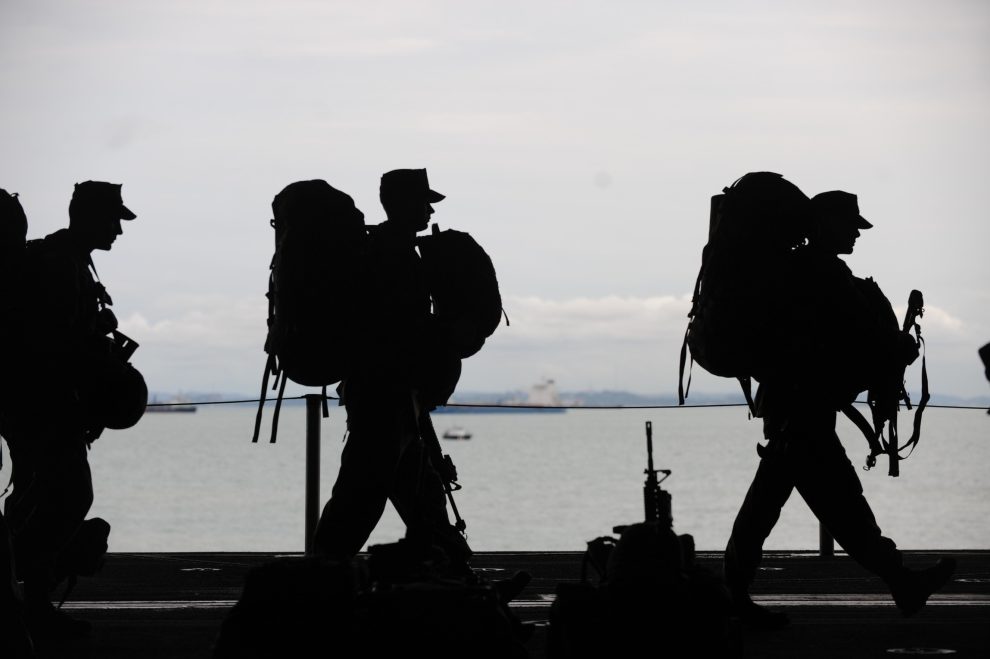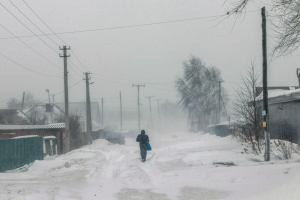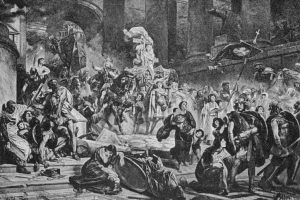Grisly photos of U.S. soldiers spotlight the spiritual injuries our men and women in combat sustain in war, as well as their tragic results.
In photographs of a pair of U.S. soldiers posing with the corpse of an Afghan civilian they are accused of murdering. Stories in The New York Times and Rolling Stone reported the two soldiers were part of a “kill team” responsible for murdering several innocent Afghans in the first half of 2010, and that members of this group took scores of “trophy” pictures of their dead victims and distributed digital files of this gruesome collection to soldiers in Afghanistan and the United States.
The pose of the two soldiers and the humiliating treatment of their innocent victim’s body is reminiscent of pictures from Abu Ghraib. The photographer’s intent is to demean and degrade, and the gleeful look on the young soldiers’ faces reminds one of photographs from a lynching. The pictures are sickening, and even glancing briefly at them feels obscene and voyeuristic.
Once the military learned of the crimes of the “kill team,” 12 low-ranking soldiers were charged and arrested for these atrocities, and every effort was made to confiscate or delete all of the pictures, lest they generate a public outcry and undermine U.S. counterinsurgency strategy in Afghanistan.
There are several disturbing elements to this story. One is that not a few young American soldiers committed coldblooded murder and felt entitled or compelled to take and publish photographs announcing their participation in these war crimes. Another is that a larger group of soldiers copied and collected these gruesome pictures as war mementos. Both of these remind us of the moral costs of combat and suggest that war inflicts more than physical injuries on soldiers.
Alongside the deaths of hundreds of thousands of Iraqis and Afghans and 7,000 U.S. and coalition troops, the wars in Afghanistan and Iraq have produced more than 320,000 traumatic brain injuries, more than 300,000 cases of post-traumatic stress disorder (PTSD), and resulted in a suicide epidemic among soldiers and veterans that has taken more lives than combat. It should not surprise us that these wars have also wounded the souls and character of many soldiers.
American philosopher William James once argued that, for all its horror, war taught our young a set of Spartan virtues they would not learn in civilian life—and this military myth continues in the belief that combat will somehow turn our boys into men. This is certainly the myth of HBO’s Band of Brothers, Stephen Spielberg’s Saving Private Ryan, and dozens of other war films.
But James and these Hollywood epics overlook the moral injuries inflicted by combat, the psychic wounds that leave so many veterans incapable of returning to normal life.
James looked away from the thousands of shell-shocked, suicidal, and homeless GIs who make up the long and enduring casualty list of our wars. He closed his eyes to the tragic reality that the horror of war can undo the character of those sent to kill into battle.
Christian Ethicist Stanley Hauerwas argues that the greatest sacrifice made in war is the sacrifice of our unwillingness to kill. We do not just ask young men to die for their country, we command them to kill for it.
World War II studies showed that even in combat most American GIs were quite reluctant to kill. Military training was changed to motivate soldiers to kill more readily, but there were psychic and moral costs for this. As psychiatrist Jonathan Shay detailed in Achilles in Vietnam (Simon & Schuster), his 1995 study of “combat trauma and the undoing of character,” many soldiers are brutalized and injured by the horror of war and the violence they are exposed to and commanded to carry out.
War correspondent Chris Hedges argued in his bestselling book War Is a Force That Gives Us Meaning (Anchor), that war is intoxicating and addictive, and that the theater of war creates its own skewed moral universe, a disorienting and polarized world where the enemy is a savage fiend deserving annihilation.
Shay confirms this by describing the way the moral universe of soldiers is reduced to an “us-versus-them” mentality, and how a deadly cocktail of tedium, frustration, terror, and rage at the death of comrades can lead to a berserk state in which murder and atrocities seem acceptable.
The best war stories ever told have not looked away from the moral injuries inflicted on those asked to make the ultimate sacrifice and kill another human being. Stephen Crane’s Red Badge of Courage (on the American Civil War), Erich Maria Remarque’s All Quiet on the Western Front (World War I), and Tim O’Brien’s The Things They Carried (Vietnam War) take an unblinking look at the horrible things that happen to young men sent into battle. And HBO’s more recent The Pacific confronts us with the underside of World War II, America’s “good war,” detailing the way ordinary men are drawn into the savage and murderous maelstrom of combat.
In a similar fashion the 2007 Iraq war film In the Valley of Elah tracks a platoon of young soldiers deeply corrupted by the violence and madness of war, while Kathryn Bigelow’s Oscar-winning The Hurt Locker uncovers the addictive and intoxicating side of war.
Vietnam vet and author Tim O’Brien has argued that “a true war story is never moral. You can tell a true war story by its absolute and uncompromising allegiance to obscenity and evil.” The photographs shot by members of the American “kill team” tell an obscene and evil story. But perhaps other soldiers kept those pictures because the violence resonated with their experience of the madness into which we had sent them.
As long as our official war stories glorify soldiers and combat, we betray those we have commanded to make the ultimate moral sacrifice, pretending we have sent them to war to behave like Boy Scouts.
This article appeared in the June 2011 issue of U.S. Catholic (Vol. 76, No. 6, pages 40-41).












Add comment